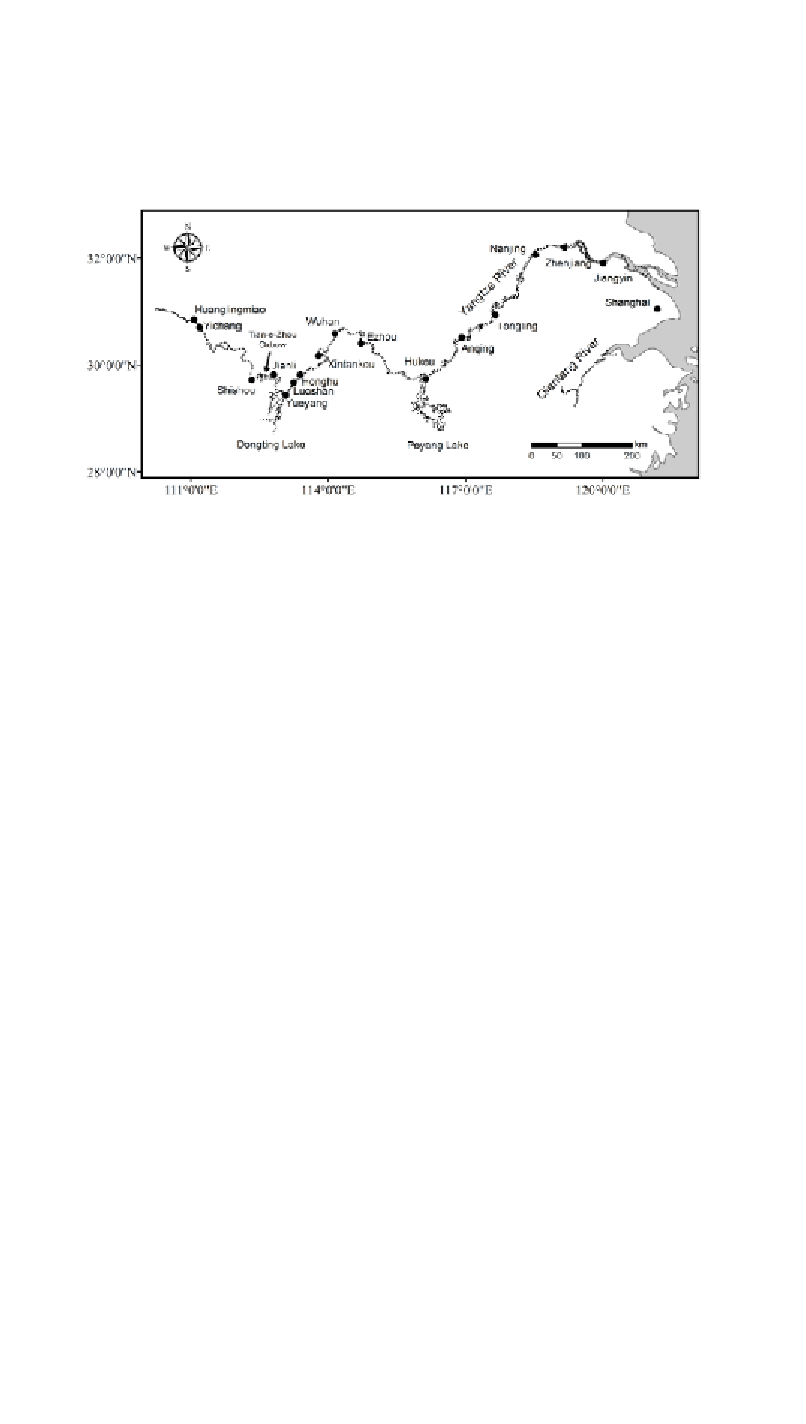Biology Reference
In-Depth Information
landmark surveys described a consistent rapid decline: ~200 individuals in 1990 (Chen et al.,
1993), less than 100 individuals in 1995 (Liu et al., 1996) and zero individuals in 2006 and
thus likely to be extinct (Turvey et al., 2007). Additional surveys (more regular) were
conducted to monitor their abundance and look into their major threats (Akamatsu et al.,
1998; Wang et al., 1998, 2000, 2006; Zhou et al., 1998a; Zhang et al., 2003; Wang et al.,
2006).
Figure 1 Historical distribution map of the baiji (dashed line and area in Yangtze and Qiantang Rivers
and two lakes) and Yangtze finless porpoise (dashed line and area only in Yangtze River and two
lakes). The positions of extant reserves related to Yangtze cetaceans are marked in the map.
The baiji's habitat continuously shrank and became fragmentary after its earlier
abundance record in the 1950s. Baiji had widely inhabited the middle-lower Yangtze River
drainage in 1970s (Figure 1, i.e. river section from Yichang to Shanghai and two appended
lakes, the Poyang and Dongting, Zhou et al., 1977). It also once occurred in the Qiantang
River, based on dozens of observations conducted in the river in 1955 (Zhou et al., 1977)
(Figure 1). The most upriver sighting ever recorded in the Yangtze occurred in 1940s at
Huanglingmiao, a small town ~30 km upriver Yichang (Zhou et al., 1977) (Figure 1). The
density was very sparse and its distribution range was adversely reduced to a restricted
section from Shishou to Zhenjiang in 1990s (Hua et al., 1995). Surveys in 1997-1999
suggested that the baiji has been extirpated from Poyang and Dongting lakes (Yang et al.,
2000) and survived exclusively in a few sections (Honghu, Hukou - Tongling, Nanjing -
Zhenjiang) with tiny population size (Zhang et al., 2003).
Yangtze
Finless
Porpoise
There was no systematic research on the Yangtze finless porpoise until late 1978 when
the Baiji Research Collaboration Group was organized by the Chinese Academy of Science
(CAS) whose members included the Institute of Hydrobiology, CAS, Nanjing Normal
College (now re-named as Nanjing Normal University), the Institute of Acoustics, CAS, and
the Institute of Biophysics, CAS. While this group mainly focused on the study of baiji at the
beginning, information of the Yangtze finless porpoise was also collected throughout the

Search WWH ::

Custom Search